#18th Century Menswear
Photo

Thomas Hudson, Portrait of a Man, 1750, oil on canvas, 127.3 x 102 cm, Dulwich Picture Gallery, London
Source: Wikimedia Commons
#art#painting#portrait#portrait of a man#male portrait#thomas hudson#1750s#18th century#18th century art#18th century painting#18th century fashion#18th century menswear#historical fashion#rococo#rococo fashion#rococo menswear#oil painting
170 notes
·
View notes
Text
I made myself an OFMD inspired banyan/dressing gown!
I am ready for piracy.


6 notes
·
View notes
Photo
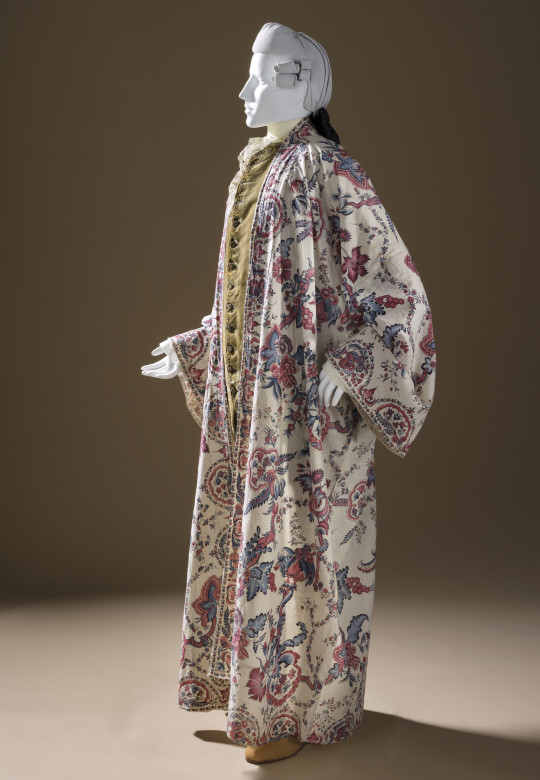

Banyan
c.1750
Coromandel Coast, India for Western Market
LACMA (Accession Number: M.2005.42)
#banyan#fashion history#historical fashion#menswear#mensfashion#1750s#18th century#india#cotton#paint#dye#1750#1755#1759#georgian fashion#georgian era#lacma#fucking LOVE the back
760 notes
·
View notes
Text
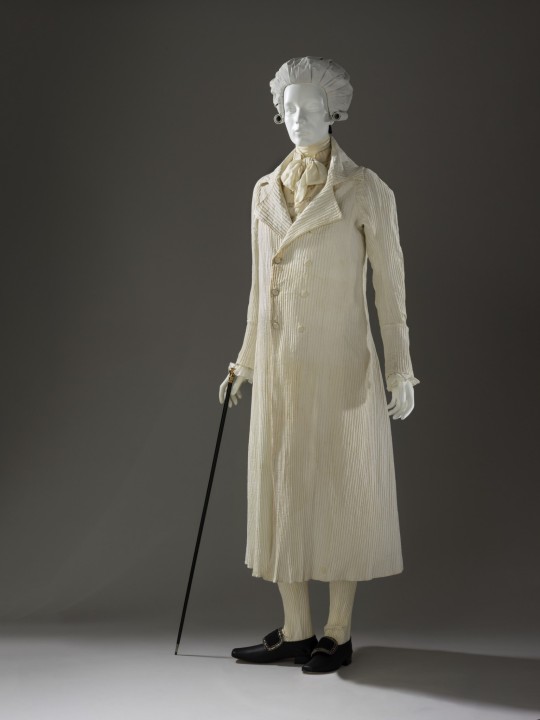

• Ensemble (Coat and Trousers).
Date: ca. 1795
Medium: Cotton warp- and weft-faced twill
#fashion history#history of fashion#fashion#menswear#men's fashion#men's suit#ensemble#coat and trousers#18th century#18th century fashion#ca. 1795
617 notes
·
View notes
Text


Men’s coat, ca. 18th century.
I love the flower details on the buttons, perhaps they’re forget-me-nots and this was made for a wedding?
#I wish I had more info but the museum didn’t either they just found it in their collections!#menswear#men’s fashion#18th century
833 notes
·
View notes
Text

#higginsandcole#country house#interior#architecture#library#preppy#england#books#english country house#menswear#18th century
151 notes
·
View notes
Text
Pop history loves compelling but simple stories but actual history is nuanced . Pink was a masculine colour until the Nazi’s used it as a symbol for homosexuality is a compelling story but it’s not really true. There are elements of truth in it. But it’s not as simple as that.
#I’m working on a post about pink in 18th century menswear#but I feel like I have to deconstruct this myth before I even start
48 notes
·
View notes
Text
time for an extremely specific fashion history question: does anybody have any references to what winter wear for common people looked like in western europe in approx the mid-1700s??? anything from around 1720-1780 would be an amazing help, especially menswear. just practical warm clothing and work wear for the outdoors.
I have been Googling for hours and I’m getting almost nothing useful, mostly just upper class fashion, which is basically the opposite of what I’m looking for
#fashion history#menswear#historical clothing#18th century fashion#18th century clothing#1700s clothing#1700s fashion#art reference
156 notes
·
View notes
Text
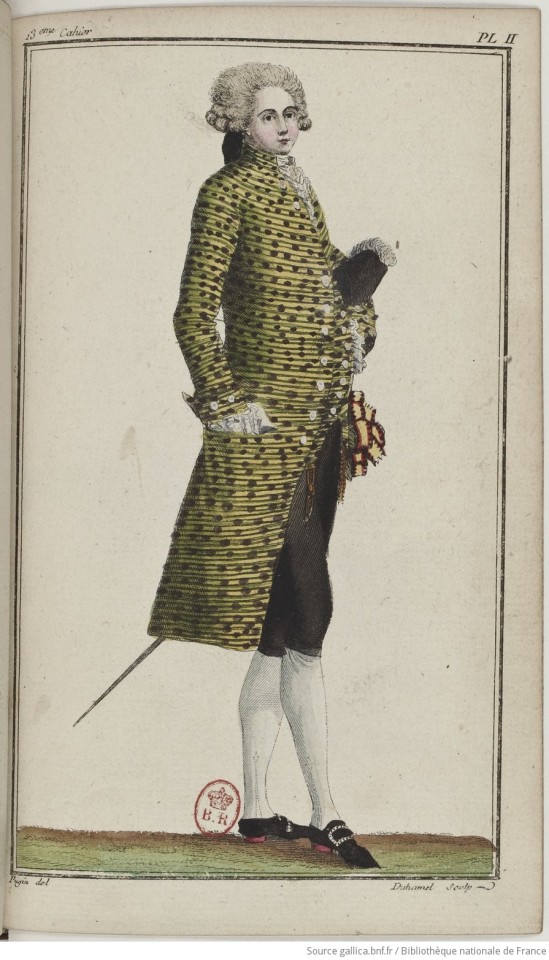
Planche 2, Cabinet des Modes, May 15th 1786, Bibliothèque Nationale Française.
We already looked at the female look for this Cabinet des Modes edition, here we have the male, which I LOVE, because late 18th century menswear is just *chef kiss*. The description is a little shorter than the one for the woman, but here we are in my loose and shortened rough translation:
Plate 2
The coat and waistcoat of the man shown in this plate, are made of spring velvet in a lemon green background with green stripes and lilac spots. The buttons that decorate the coat and waistcoat are enameled and speckled in a contrasting colour. The breeches are made of black liver cloth and the fit is snug/tight. The stockings are white and the shoes have red heels (this fashion is not for everyone) (...). The man wears a white plumed hat on his arms, and lace ruffle on his wrists. He has his left hand in his waistcoat pocket, and his right in his coat pocket.
#18th century#18th century fashion#menswear#green#green menswear#cabinet des modes#fashion plate#1786#1780s#late 18th century
30 notes
·
View notes
Photo

Johann Friedrich August Tischbein, Portrait of Nicolas Châtelain, 1791, oil on canvas, 219 x 133.5 cm, Neue Pinakothek, Munich
Source: Wikimedia Commons
#art#painting#johann friedrich august tischbein#portrait#1790s#18th century#late 18th century#18th century fashion#late 18th century fashion#18th century menswear#historical fashion#historical menswear#18th century art#18th century painting#oil painting
162 notes
·
View notes
Text

Blue Embroidered Silk Coat, French, ca. 1775.
Cora Ginsburg.
#chinese silk#cora ginsburg#18th century#france#french#silk#1775#1770s#1770s extant garment#1770s menswear#1770s france#blue#menswear#coat#reign: louis xvi#extant garments
51 notes
·
View notes
Text

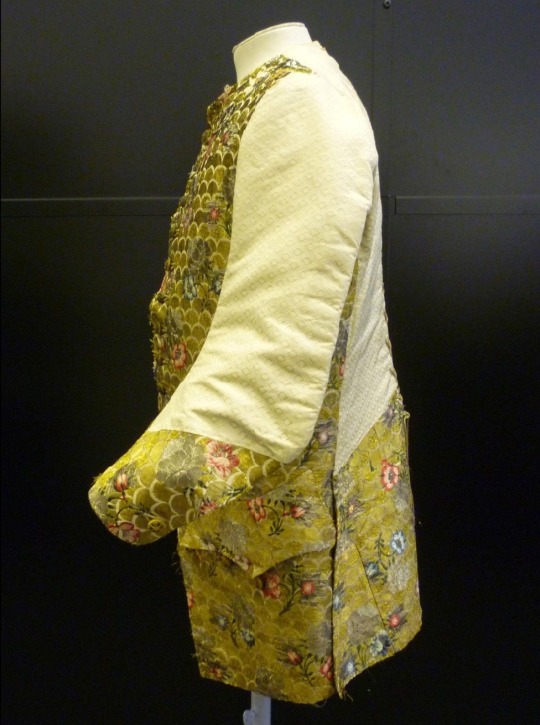

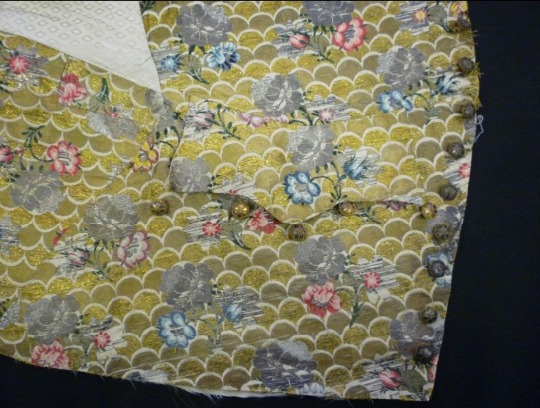
Man's sleeved waistcoat of ivory silk, 1755c, Spitalfields, English; brocaded with silk and metal thread
#18th century#18th century fashion#spitalfields silk#fashion history#historical fashion#silk#1750s fashion#menswear#men's fashion#waistcoat
39 notes
·
View notes
Photo

Court Suit
1790s
United Kingdom
Victoria & Albert
#fashion history#historical fashion#1790s#regency era#menswear#mensfashion#regency fashion#regency#floral#flower print#silk#linen#cotton#embroidery#british#united kingdom#18th century#1790#1795#1799#court suit#v and a#v and a museum#popular
1K notes
·
View notes
Text
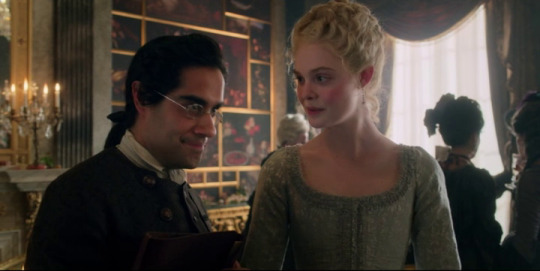
so the master was rasputin and this guy???
#sacha dhawan#i am watching The Great i'd forgotten he was in this#and wearing 18th century clothing omgggggggg#it's one of the few periods where menswear AND womenswear are both fabulous#they had a lot of revolutions too but i'm not sure if the clothes had anything to do with that (other than Offensive Monarchical Opulence)#idk anything about Catherine the Great other than that she's russian with nice frocks and she didn't fuck a horse
8 notes
·
View notes
Text

I’m in love with this embroidery detail
Waistcoat, France, circa 1785-95
White silk waistcoat with high stand collar and straight hem edge. Very deep border at front edges of a curving, flowering vine. At the bottom, embroidered figures in classical dress stand in front of a stone balustrade with urns of flowers and fruit trees. The figures represent Dido and Aeneas, from the opera by Piccini and Marmontel, produced in 1785. The figure of Dido is after a drawing by Jean-Michel Moreau le Jeune for the costume worn by Mlle. de Saint-Huberty. In twenty-five colors of silk.
#waistcoat#France#1780s#1790s#18th century#1700s#art#embroidery#fashion#pretty#French#French fashion#rococo#baroque#french art#history of fashion#sewing#clothing#men’s fashion#menswear#European art#beautiful#dido#Aeneas#Jean-Michel Moreau le Jeune#Mlle. de Saint-Huberty#mythology#roman mythology#Roman#detail
15 notes
·
View notes
Text
traditionally women's clothing peaked late victorian and early edwardian and traditionally men's clothing peaked edwardian through the 1940s sorry not sorry
#raven rambles#honorable mention to late 18th century western menswear#(this is all western wear unfortunately)
5 notes
·
View notes